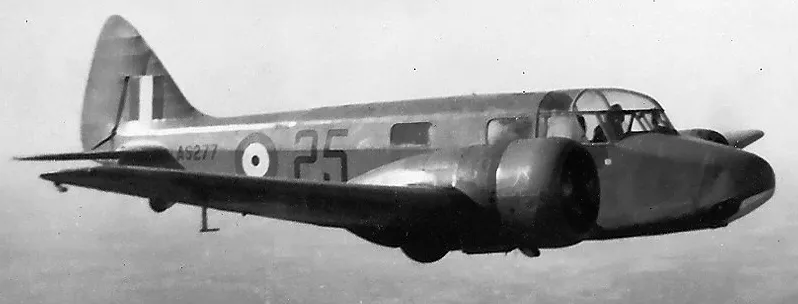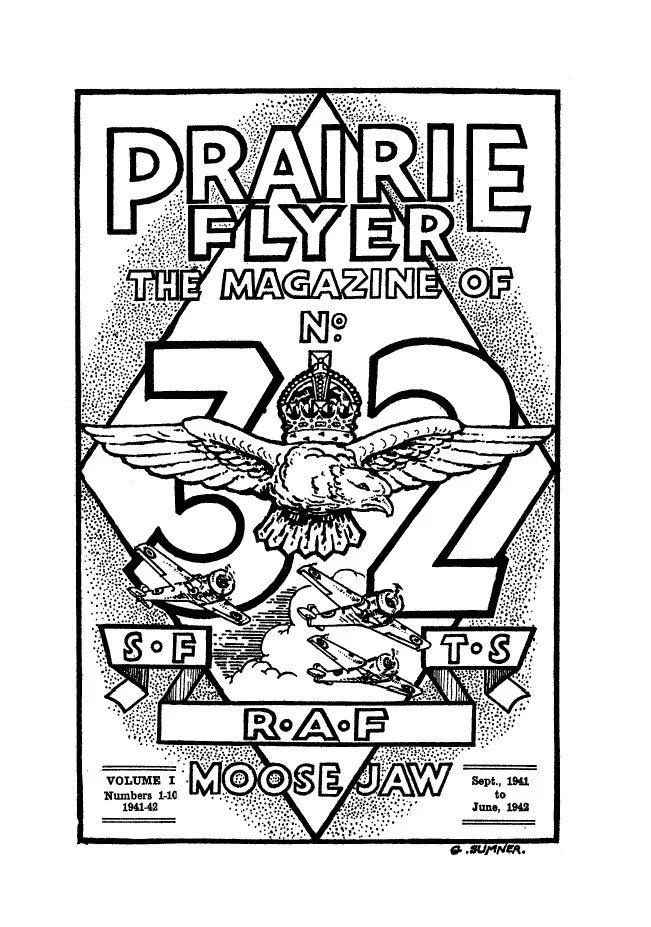Airspeed Oxford

Airspeed A.S. 10 Oxford Mk. II, RCAF (Serial No. AS277), 25, in flight over Saskatchewan, 1942.
The Airspeed AS.10 Oxford was a twin-engine monoplane aircraft developed and manufactured by Airspeed. It saw widespread use for training British Commonwealth aircrews in navigation, radio-operating, bombing and gunnery roles throughout the Second World War.
The Oxford was developed by Airspeed during the 1930s in response to a requirement for a capable trainer aircraft that conformed with Specification T.23/36, which had been issued by the British Air Ministry. Its basic design is derived from the company's earlier AS.6 Envoy, a commercial passenger aircraft. Performing its maiden flight on 19 June 1937, it was quickly put into production as part of a rapid expansion of the Royal Air Force (RAF) in anticipation of a large-scale conflict.
As a consequence of the outbreak of war, many thousands of Oxfords were ordered by Britain and its allies, including Australia, Canada, France, New Zealand, Poland, and the United States. Following the end of the conflict, the Oxford continued to achieve export sales for some time, equipping the newly formed air forces of Egypt, India, Israel, and Yugoslavia. It was considered to be a capable trainer aircraft throughout the conflict, as well as being used a general-purpose type. A large number of Oxfords have been preserved on static display. Wikipedia
CASPIR Aircraft Groups:
RCAF On Strength (821), Canadian Aircraft Losses (168)Oxford Mk. I AT483
To No. 4 Training Command on 10 December 1941, for use by No. 34 Service Flying Training School at Medicine Hat, Alberta. With No. 32 Service Flying Training School at Moose Jaw, Saskatchewan when it collided with Oxford AS697 while both were taxiing at Moose Jaw on 24 June 1943 (or 1942?). Category C10 damage to this aircraft, but no injuries. Still with this School when it crashed at 19:20 on 11 August 1943. Failed to gain sufficient airspeed during take off run, lifted off and touched down several times before barely clearing telephone lines at edge of airfield. Aircraft then stalled, flipped over, and dove into the ground 2 miles west of Moose Jaw aerodrome. Investigation revealed port engine plugs had become fouled during prolonged idling prior to the take off. Pilot Officer Roy Wingham and LAC D.V. Blindell, both RAF, died without recovering consciousness. Scrapped at No. 32 SFTS.
1941-10-27 Taken on Strength No. 9 Repair Depot 2019-08-20
1943-June-24 Accident: 32 Service Flying Training School Loc: Aerodrome Names: Bragg | Davids | Michielsen | Thompson
1943-August-11 Accident: 32 Service Flying Training School Loc: Aerodrome Names: Blindell | Wingham
1943-10-27 Struck off Strength Struck off, reduced to spares and produce 2019-08-20





 Commonwealth War Graves Commission
Commonwealth War Graves Commission Find-A-Grave.com
Find-A-Grave.com Library and Archives Canada Service Files (may not exist)
Library and Archives Canada Service Files (may not exist) Rosedale Cemetery, Canada
Rosedale Cemetery, Canada Oxford Trainer
Oxford Trainer Wikipedia Oxford Trainer
Wikipedia Oxford Trainer Harold A Skaarup Web Page
Harold A Skaarup Web Page
 RCAF.Info - RCAF Station Moose Jaw SK
RCAF.Info - RCAF Station Moose Jaw SK